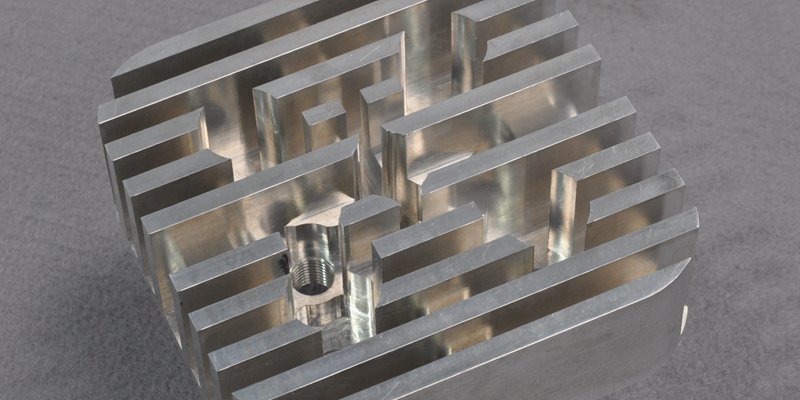
2024 aluminum alloy is widely used in the manufacture of aircraft parts due to its high strength-to-weight ratio. Its unique composition is responsible for its properties and contributes to its versatility and diverse industrial applications.
The successful application of Alloy 2024 is only possible through understanding its properties and processes. Therefore, we will discuss its properties, machining processes and applications.
What is 2024 aluminum alloy?
2024 is a type of aluminum alloy with exceptional properties due to the chemical composition. It contains copper (4.3-4.5%) as the primary alloying element and other elements such as manganese, magnesium, silicon, nickel, bismuth, lead, zinc and chromium.
Elements such as copper improve strength-to-weight ratio and machinability. Therefore, 2024 aluminum alloy is ideal for manufacturing structural parts. The following table shows the alloying elements and their percentage composition.
| alloy element | Percentage composition by weight |
| silicon | Maximum 0.5% by weight |
| iron | Maximum 0.5% |
| copper | 3.8% – 4.9% |
| manganese | 0.3% – 0.9% |
| magnesium | 1.2% – 1.8% |
| chrome | Maximum 0.1% |
| zinc | Maximum 0.25% |
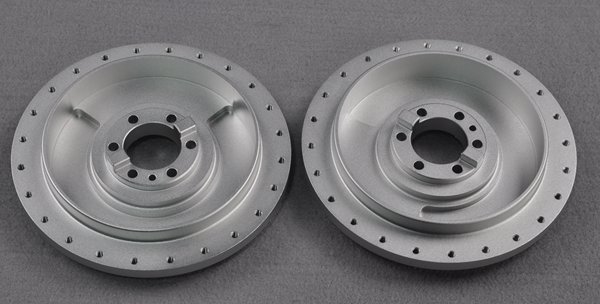
Aluminum Alloy Properties 2024
2024 The properties of aluminum depend on its chemical composition and can be divided into physical, mechanical and other properties. Furthermore, the properties vary depending on the heat treatment, so it is necessary to understand the material to better use it.
Physical properties
The physical properties of aluminum 2024 provide information about its behavior and suitability for intended applications. The physical properties of aluminum 2024 are:
- Density : 2024 aluminum alloy has a density of 2.78 g/cm3. This is low (slightly higher than pure aluminum at 2.7 g/cm3), meaning the material can provide strength without adding weight.
- Thermal conductivity : Its thermal conductivity is about 120 W/(m·K). Therefore, it is important for parts that require faster heat dissipation, especially aircraft engines.
- Electrical conductivity : 2024 Aluminum alloys have an electrical conductivity of 30% IACS due to the copper they contain, although they are not as conductive as their primary alloying element (copper).
- Coefficient of thermal expansion (CTE) : 2024 aluminum has a moderate CTE (23.2 µm/m°C), meaning its dimensions change little as temperatures increase. Therefore, manufacturers can predict material expansion and contraction and reduce the risk of part failure due to temperature fluctuations.
- Machinability : The 2024 aluminum alloy is very machinable, that is, it is compatible with machining operations such as cutting, drilling, turning, etc. Furthermore, it is very machinable, facilitating cutting and extrusion. Their excellent machinability and machinability make them a valuable material in aerospace and automotive sheet metal processing.
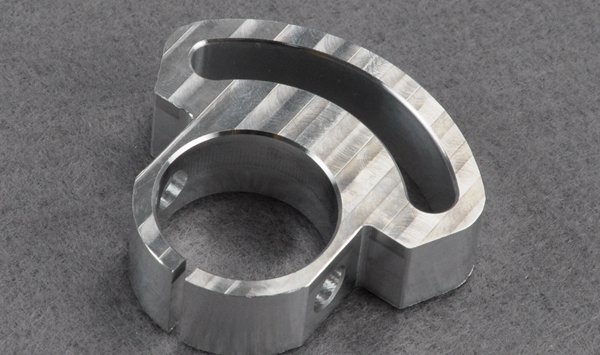
Mechanical properties
The mechanical properties of the alloy describe its response to mechanical forces or loads. That includes:
- Tensile strength : 2024 aluminum has a tensile strength of 290 – 450 MPa (42,100 – 65,300 psi). This shows that it can withstand tremendous force when pulled or stretched before breaking. Furthermore, it is suitable for the production of parts with structural/load-bearing properties.
- Stretch limit : Its yield limit is 195-415 MPa (28,300-60,000 psi). This means that a lot of tension is needed to undergo irreversible plastic deformation. Therefore, it is suitable for manufacturing parts with structural applications.
- hardness : Its hardness depends on thermal hardness and is between 50HB and 120HB. Furthermore, it measures its resistance to deformation, abrasion and scratches and can guide manufacturers in the application of 2024 aluminum alloy.
- Fatigue resistance : 2024 aluminum alloy has good fatigue resistance (138 MPa or 20,000 psi), calculated at 500,000,000 load cycles below the yield point. Therefore, one of the applications of aluminum alloy 2024 is in the production of parts that can withstand cyclical loading or repetitive stress.
- Pure strength : Shear strength is a measure of 2024 aluminum alloy's resistance to shear or cutting stresses. It has a rating of 283 MPa (41,000 psi), which is moderately strong.
Below is a summary table of 2024 aluminum properties with differences based on common thermal hardnesses:
| physical property | 2024-Q3 | 2024-T4 | 2024-T851 |
| density | 2.78g/cm3 | 2.78g/cm3 | 2.78g/cm3 |
| Solid | 502°C | 502°C | 502°C |
| Liquid | 638°C | 638°C | 638°C |
| Annealing Temperature | 413°C | 413°C | 413°C |
| Thermal conductivity | 121W/mK | 121W/mK | 151W/mK |
| Specific heat capacity | 0.875 KJ/kg°C | 0.875 KJ/kg°C | 0.875 KJ/kg°C |
| Thermal conductivity | 121W/mK | 121W/mK | 151W/mK |
| Mechanical properties | 2024-Q3 | 2024-T4 | 2024-T851 |
| tensile strength | 483 MPa | 469MPa | More than 455 MPa |
| Stretch Limit | 345 MPa | 324 MPa | More than 400MPa |
| modulus of elasticity | 73.1GPa | 73.1GPa | 72.4GPa |
| Brinell hardness – weight 500g, 10mm ball | 120 | 120 | 128 |
| Elongation at break (12.7 mm test sample) | 0.18 | 0.19 | 0.05 |
| Pure strength | 283 GPa | 283MPa | 296 GPa |
| fatigue resistance | 138 MPa | 138 MPa | 117 MPa |
| Thermal expansion coefficient | 23.2 µm/m°C | 23.2 µm/m°C | 23.2 µm/m°C |
Methods for processing and producing aluminum alloys 2024
The excellent properties of 2024 aluminum make it a popular industrial material. Below are various processing and manufacturing methods used to create the alloy.
Alloy and casting
The chemical composition of 2024 aluminum alloy is copper, magnesium, manganese and other elements such as silicon and iron in 0.3%.
The 2024 aluminum manufacturing process begins with casting. Aluminum ingots and alloy elements are melted in a furnace and the molten form is cast into various shapes. The casting method can be continuous casting or ingot casting, and the choice of casting method depends on the requirements and shape of the final product.
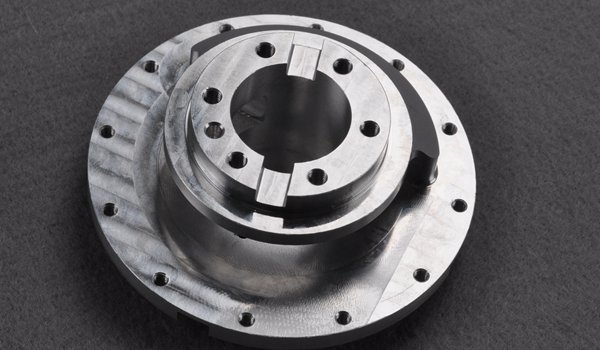
Heat treatment
Thermal hardening is a process that strengthens a metal or its alloy. This includes processes such as:
- Through solution annealing, alloying elements can dissolve in the aluminum matrix and form a homogeneous microstructure. The process takes place at high temperature (typically 480°C to 495°C), maintaining the temperature for a predetermined time.
- Quenching is a rapid and controlled cooling of the alloy after heat treatment. This freezes the microstructure of the alloy and prevents the formation of large precipitates.
- Another process that the 2024 alloy goes through is aging, which results in a different hardness. It can be natural, as seen in (T3), or occur at lower temperatures (normally 120°C and 190°C). This leads to the precipitation of fine particles within the aluminum matrix and increases the strength and hardness of the alloy.
- Cold working involves cold forming the 2024 alloy using techniques such as rolling, extrusion and drawing. This increases the strength of the alloy and allows it to be subsequently subjected to machining techniques such as milling and turning.
Due to thermal hardening, 2024 aluminum alloy has slightly different mechanical properties. Each hardness grade has a designation, “Tx”, where x is a one to five digit number that encodes the properties of the alloy.
The first digit indicates the heat treatment method, while the second through fifth digits indicate specific manufacturing qualities. For example, for T42 hardness, the number 4 represents solution annealing and natural aging, and “2” means that the buyer must heat treat the metal himself.
However, it is confusing, manufacturers need to talk to experts who know the properties of the alloy. Common hardness levels of 2024 aluminum alloy include:
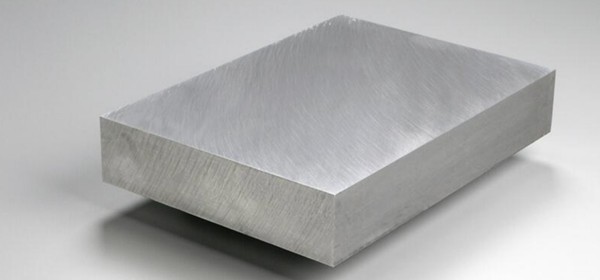
2024-Q3
2024-T3 undergoes solution annealing at approximately 485°C, cold working (or cold rolling) and natural aging at room temperature. It has a tensile strength of 400-430 MPa (58-62 ksi) and a yield strength of 270-280 MPa (39-40 ksi). Its good formability and strength make it suitable for producing parts with complex shapes.
2024-T4
T4 temper alloy undergoes solution annealing treatment and natural aging at room temperature. This leads to better ductility and formability. Therefore, they are suitable for producing parts that require better formability without reducing strength.
2024-T6
This alloy was subjected to solution annealing and then artificial aging at approximately 190-205°C (375-400°F). This makes it stronger and harder hardness. Therefore, it is suitable for the production of parts where strength is crucial.
2024-T62
This T6 2024 aluminum alloy has undergone stabilization heat treatment after artificial aging. This means it has better resistance to stress corrosion cracking. Furthermore, it is suitable for parts used in corrosive environments.
2024-O
This 2024 aluminum alloy has not been heat treated, but has been fully annealed. This increases its formability but reduces its strength compared to other hardness levels. It has a tensile strength of 140 – 210 MPa and a maximum yield strength of 97 MPa (14,000 psi). It is suitable for producing parts that require flexibility.
Cold forming and machining
Cold working processes include rolling, extrusion and drawing, which increase the strength and other mechanical properties of 2024 aluminum. Additionally, they can shape the alloy into the desired design. 2024 aluminum alloy can also be easily machined using conventional machining techniques such as milling, turning and drilling.
Welding
2024 aluminum alloy can also be processed with welding methods such as TIG welding, resistance welding and friction welding. Welding 2024 aluminum is critical due to its tendency to form microcracks. Due to their poor weldability, riveting and gluing are the most common joining techniques.
2024 aluminum alloy in CNC machining
CNC machining is a subtractive manufacturing process in which a computer-controlled machine removes parts of a part according to predefined designs and specifications and shapes the desired product. 2024 aluminum can be processed using milling, turning and drilling techniques.
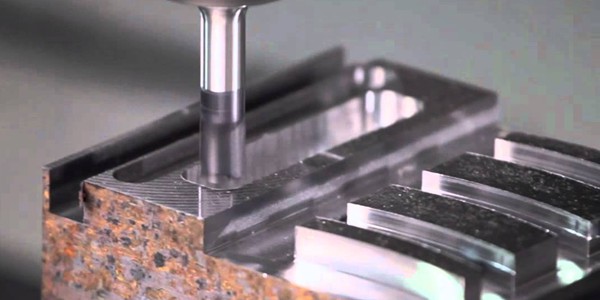
The CNC process is suitable for prototyping and manufacturing 2024 aluminum alloy parts for the following reasons:
High precision and accuracy
CNC machines are highly accurate and accurate, allowing for design compliance. This also means that there is little or no difference between different batches of products. Therefore, their ability to achieve tight tolerances makes them suitable for product assembly in many applications.
Surface Finish
2024 aluminum processing creates a fine surface finish. This is ideal for parts that require aesthetic or functional properties, such as low friction. This means there is less need for other surface finishing processes, reducing post-processing costs.
versatility
CNC machining can work with different alloy sizes and shapes. Furthermore, a single setup can accommodate many tools and allow cutting, turning or milling of the alloy. This consequently facilitates the manufacture of various parts.
automation
CNC machines do not depend on human operation. They not only ensure error-free production but also greatly speed up the process, which is why they are widely used in many industries.
Advantages of 2024 aluminum alloy compared to other alloys
Due to its advantages, the alloy is a notable candidate in various industries. Below are some advantages of the league compared to others.
High strength/weight ratio
2024 aluminum alloy has an exceptional strength-to-weight ratio compared to 6061 aluminum and 7075 alloy. However, 6061 and 7075 alloys exhibit better resistance to stress corrosion cracking.
Good fatigue resistance
Its fatigue resistance makes it suitable for repeated cyclic loading of parts. This makes it a better option than 6063 aluminum alloy, which is known for its excellent formability and corrosion resistance but poor fatigue resistance.
Machinability
It is more machinable than 7075 aluminum alloy because the latter is harder. Therefore, it is more suitable for precision machining. Furthermore, it is better than 6063 aluminum alloy, which is only suitable for simpler profiles and shapes due to its extrudability.

Limitations of 2024 Aluminum Alloy in Production
2024 aluminum alloy also has its disadvantages, including:
Susceptibility to stress corrosion cracking
2024 aluminum alloy is susceptible to stress corrosion cracking. This limits its use in harsh environments unless it is galvanized and coated. This is different from 7075 and 6061 aluminum alloys, which are known for their exceptional resistance to stress corrosion cracking.
Low weldability
It also has limited weldability because it is susceptible to cracking, which can compromise the integrity of the welded joint. This is different from 6061 and 6063 aluminum alloys, which have good weldability.
Limited formability
The formability of 2024 aluminum alloy limits its use in complex or deeply moldable parts. Instead, it is better to use 3003 and 5052 aluminum alloys, whose excellent formability makes them suitable for automotive sheet metal manufacturing.
2024 Aluminum Alloy Parts Applications
aerospace industry
Aluminum alloy 2024 is the most important material in the aerospace industry due to its excellent strength-to-weight ratio and corrosion resistance. It is used for aircraft structural components such as wing skins, fuselage panels and fasteners/rivets.
Auto Industry
The strong properties and light weight of 2024 aluminum make it applicable in the automotive industry as it improves fuel efficiency and vehicle performance. It is suitable for producing suspension components such as control arms and steering knuckles, as well as high-performance vehicle parts such as steering knuckles, wheel axles and wheels.
Sports equipment
2024 aluminum alloy is also used to produce durable, robust and corrosion-resistant sports equipment parts such as bicycle frames, baseball bats and climbing equipment such as carabiners and pulleys.
Marine applications
Alloy 2024 can also be used well in harsh environmental conditions, especially after galvanizing or galvanizing. It is therefore suitable for the production of parts used in the maritime sector. This includes boat hull and mast structures, ship fittings, ladders, handrails and fasteners.
Concluding
2024 aluminum is lightweight and an important material in the aerospace industry due to its strength. Successful use of the material is possible only if you understand its properties.

Common questions
What is the operating temperature range for 2024 aluminum?
The upper operating temperature range for 2024 aluminum alloy is not directly known as it depends on the type of hardness used and industrial applications.
Is 2024 aluminum good for welding?
No, 2024 Aluminum may present microcracks resulting in loss of structural integrity. Therefore it is not good for welding.
How strong is 2024 aluminum?
2024 aluminum has a tensile strength of 290 – 450 MPa (42,100 – 65,300 psi).
What are the common trade names for 2024 aluminum?
Common trade names for 2024 aluminum are:
- USA A82024, USA A82024, USA A92024
- Al2024-O, Al2024-T4, Al2024-T3
- AA2024-T3,
- Alclad 2024-T3, Alclad 2024-T4/T351, Alclad 2024-T851 and Alclad 2024-O

























































